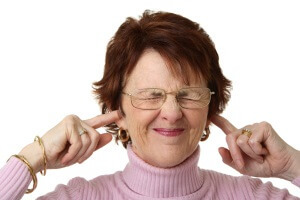
A smoking cessation calendar is a very handy thing. This is a great tool that motivates a person who wants to quit a bad habit. It is generally quite difficult to quit smoking, but it is quite possible.
For people suffering from nicotine addiction, a special calendar has been developed that lists all the positive changes in the human body that occur after smoking cessation. Moreover, the diary contains not only a physiological, but also an emotional aspect.
First week of smoking cessation
If you stop smoking, you will notice changes every day. Moreover, they are so pronounced that the person will immediately pay attention to them.
Day One
On the first day of quitting smoking, the concentration of carbon monoxide, which was previously contained in human blood, gradually begins to decline. Therefore, the transport capacity of erythrocytes is significantly improved. After that, more oxygen enters the cells of various tissues throughout the body.
Already on the first day of quitting smoking, the mood noticeably improves. The person feels joy over the decision. He is confident and proud that he could handle the difficult task. He is fully convinced that this decision is final. At this point, the person has virtually no craving for cigarettes or does not feel it at all. In addition, on the first day, it is enough to just distract from it and do your usual daily worries. But at the same time, slight dizziness and weakness may occur. Sometimes there is a feeling of anxiety, appetite worsens. Some people find it difficult to fall asleep due to sleep problems.
Second day
On the second day, the synthesis of mucus in the lungs gradually begins to decline. The ciliated epithelium in the lungs already functions much better. The first symptoms that indicate nicotine starvation appear. But at the same time, the cells of the intestinal mucosa begin to be replaced by new ones.
As for the emotional mood, the state of euphoria lasts for a few days, but some people become nervous and irritable. If you practice self-hypnosis, then the desire to smoke can gradually decrease significantly. The person is sometimes very active and then becomes slow and sleepy.
In terms of physiological manifestations, appetite is still poor, but some people may have an appetite for food that is light and pronounced in taste. The ex-smoker develops a cough whose attacks gradually intensify. Sometimes shortness of breath suffers. There is abdominal pain, the urge to urinate becomes more frequent. Dry skin is felt.
Third day
On the third day, the process of recovery of the ciliated epithelium begins. Repair also affects the mucous layers of the bronchi. More alkaline fractions are secreted in the pancreas, and the amount of mucus in the stomach is significantly reduced. Circulation in the heart and brain is improved. Vascular tone is restored. But at the same time, on the third day, the patient becomes nervous. Now, "nicotine withdrawal syndrome" is fully manifested. Otherwise, the appetite grows rapidly, you constantly want something sweet.
Fourth day

On the fourth day of smoking cessation, the level of blood flow to the brain is almost completely restored and reaches the physiological norm.
The stomach and pancreas continue to regenerate on their own. The same goes for the lungs.
What happens to the mood after 4 days: aggression gradually decreases. Otherwise, you can stop the nervousness with various medications.
The patient may be euphoric or depressed. Some people have high blood pressure, tinnitus, constipation, cough, dizziness. The fingers and toes swell a little.
Fifth day
On the fifth day, superficial microtraumas on the tongue begin to heal. Without nicotine dependence, vascular tone is normalized. Recovery takes place in separate zones of the bronchi and lungs, but bowel disorders have not yet passed. The food tastes great again, but there is a lump in the throat and he still has trouble breathing. The fifth day of quitting smoking is considered one of the most difficult, because the euphoria passes and the health condition is not yet improving. On other days there is a high risk of failure.
Sixth day
On day 6, mucus production in the lower lung zones increases. Eyelashes on the bronchi can now function actively. The secretory abilities of the pancreas and lungs were almost completely restored.
On the sixth day of smoking cessation, dyskinetic disorders may appear in the duodenum and gallbladder. To date, all white blood cells have already grown without the effects of nicotine.
Withdrawal syndrome manifests again: irritability, crying, insomnia. I want cigarettes, it’s hard to hold on, but possible.
Vegetative disorders may worsen. Decreased appetite, maybe even nausea after fatty foods. In addition, increased sweating, trembling hands, thirst, bitterness in the mouth or a lump in the throat. The body is cleansed and the dark mucus coughs.
Seventh day
On the seventh day of quitting smoking, the physical phase of nicotine addiction is almost over. Now the body has recovered to function fully at normal levels without the addition of nicotine. A full recovery will now begin. The longest rehabilitation will take place on the vessels and lungs. As for the emotional state, on the seventh day of quitting smoking, the person feels empty. Smoking is no longer a physiological need, but just a common daily ritual.
The first six months
First month

What happens in the first month after quitting a bad habit? This further renewal of the whole organism, and now at the cellular level.
The epithelial cells have been regenerated, so that the processes of absorption and production of all the substances that are further needed for the new cells, which are now functioning after the person has stopped smoking and got rid of nicotine addiction, are now stabilized.
But psychologically, this month is pretty tough. Some are satisfied with themselves and enjoy life, while others, on the contrary, take into account the number of days without cigarettes.
Second month
What happens in the second month after quitting smoking: the cells have already gone through about 2-3 cycles of renewal, so this time is best for women: yellowness and dryness of the skin disappear. But the vascular network is still preserved. This is due to the fact that the vascular cells have not yet been renewed. The lungs also continue to recover, but these processes have not yet reached acin - these are the smallest structural elements of lung tissue. The smoking ritual has not yet fully outlived its usefulness, so from time to time I want to smoke.
Third month
In the third month, complete recovery of blood vessel cells occurs. Prior to that, their tone can be disturbed by the action of any factors, especially due to stress. But in the third month after smoking cessation, vascular tone normalizes. By the way, the third month is considered critical, because around that time the physical craving for cigarettes disappears, but some people want to try again, as it was before. At this point the headache and dizziness were already completely gone. The person sleeps well.
Fourth month

What happens in the fourth month? Complete renewal of skin cells so that the complexion now becomes normal, itching, dryness and dandruff disappear.
The work of the pancreas, stomach and liver in ex-smokers returns to normal, so the food is well absorbed. The same goes for the intestines.
Appetite is stabilized, because the stress after smoking stops and there is no desire to constantly eat sweets.
Fifth month
In the fifth month after smoking cessation, the liver is the heaviest, only at the end of this month does regeneration begin in some cells of this organ. After that, healthy cells can take over some functions of dead neighbors. The lungs are still recovering. Phlegm is either absent or much less than when you just quit smoking. The urge to smoke occurs only occasionally, but this will continue until 10 months after smoking cessation.
Sixth month
Six months ago, a man smoked his last cigarette. As a result, the blood in the body was completely regenerated, not all blood cells were exposed to the effects of nicotine. They can now fully transport oxygen.
The liver continues to regenerate after smoking cessation.
This will continue for another six months. At this stage, the acini of the lungs also began to recover. Six months after quitting smoking, a person can breathe much more easily. The weight returned to normal. Appetite also becomes normal.
A year since giving up a bad habit

What happens in the seventh month? The sense of smell improves. Now the person begins to feel better aromas. The perception of food taste is also noticeably improved.
In the eighth month of smoking cessation, mucus is no longer released when the ex-smoker coughs, and the cough itself hardly appears. Now the lungs can deal with the problems on their own. If a person has already developed chronic obstructive pulmonary disease, then by the eighth month of quitting smoking, his condition will noticeably improve. The disease goes into remission and will continue the rest of the time if the person does not start smoking again.
In the ninth month, smoking cessation no longer causes such an acute desire to smoke. But it is important to learn to control yourself again, because there are many cases when a person automatically starts smoking, thinking about something.
In the tenth month of smoking cessation, some people dream real dreams where they smoke, but in real life they can easily do without cigarettes. In a dream, smoking is very real and all the sensations are vivid, so waking up will be painful. This is why many people smoke in the morning. Otherwise, if a person likes to sing, then it is much easier to control the vocal cords during that period.
In the eleventh month of smoking cessation, a person can easily cope with running, brisk walking, strength training and other sports. But the load should be gradually increased. The risk of re-smoking is approximately 20-25%.
What happens exactly one year after the bad habit stops: the body has almost completely recovered. Now the risk of stroke is no more than 30%. The likelihood of a heart attack was halved. The probability of developing oncological diseases and liver pathology decreased by 90%.
Conclusion
If you want to quit smoking, then a smoking cessation diary is the best solution. It will help in motivation, because it does not always come out quickly and easily to give up bad habits.
But if you read every day what positive changes are happening in the body, it helps to keep the trend. In addition, this diary will show which way the person went.























